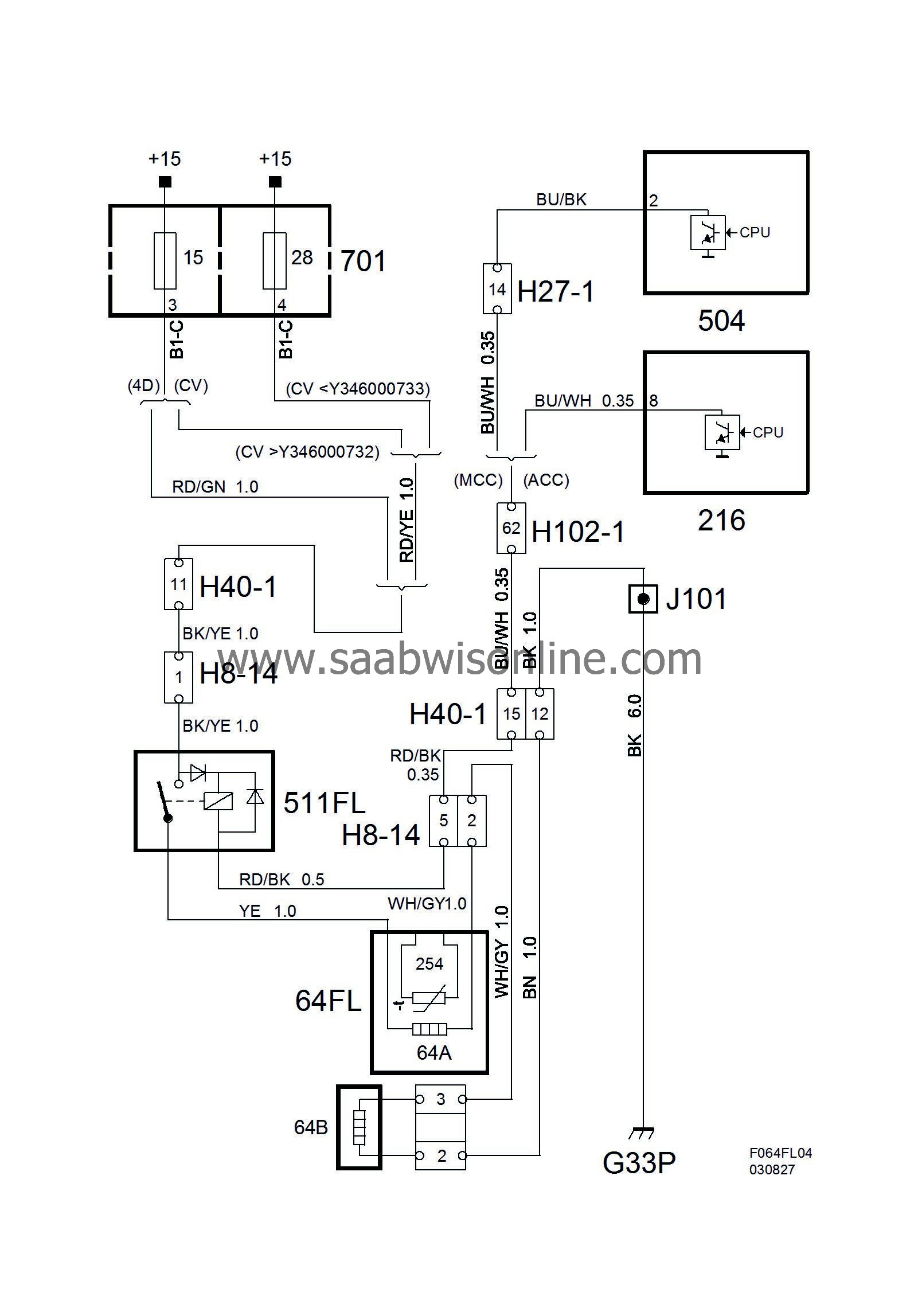Heating pad, seat, left (64FL)
| Heating pad, seat, left (64FL) |
| Location |
Heating pad, seat, seat cushion (64A) .
Heating pad, seat, back rest (64B) .
| Main task |
To quickly electrically heat the seat when starting in cold temperatures.

| Type |
The heating pad consists of two circuits, one circuit is the heating element and the other circuit provides information about the temperature in question. The temperature sensor consists of a NTC resistor whose resistance varies with the temperature of the heating pad.
| Connect |
If the heating pad is connected to the ACC unit:
Heating element:
Relay 511FR is supplied with +15 from fuse 16 in the REC (for CV with Vehicle Identification Number lower than 346000733 from fuse 28). The circuit continues through the seat and backrest and is grounded at grounding point G34P.
The relay is connected to pin 24 (K32) on the ACC control module, when pin 24 is ground the relay makes and the heating circuit is activated.

Wiring diagram, Back and seat heating pad

Wiring diagram, Heating pad temperature sensor.

Temperature sensor circuit:
The sensor (254) is ground internally in the ACC unit via pin 31 (K32) and the sensor is fed from pin 21 (K32) with 5V via an integrated 10 kOhm resistor in the ACC unit. The NTC resistor characteristics mean the at the resistance drops as the temperature rises. This means that the voltage measured across the resistor will at the same time drop with a rising temperature.
The voltage level from the A/D sensor is converted and is then available in digital form. The digital voltage level is then converted to a temperature value which is stored in the ACC unit operating memory. Voltage levels near 0 V or 5 V are determined as circuit faults.
If the heating pad is connected to the MCC:
Heating element:
Relay 511FL is fed with +15 from fuse 16 in the rear electrical centre. The circuit continues through the seat and backrest cushion and is ground at grounding point G34P.
The relay is connected to pin 3 on the MCC control module, when pin 3 is ground the relay makes and the heating circuit is activated.
Temperature sensor circuit:
The sensor (254) is ground internally in the MCC unit via pin 9 and the sensor is fed from pin 15 with 5V via an integrated 10 kOhm resistor in the ACC unit. The NTC resistor characteristics mean the at the resistance drops as the temperature rises. This means that the voltage measured across the resistor will at the same time drop with a rising temperature.
The voltage level from the A/D sensor is converted and is then available in digital form. The digital voltage level is then converted to a temperature value which is stored in the ACC unit operating memory. Voltage levels near 0 V or 5 V are determined as circuit faults.


